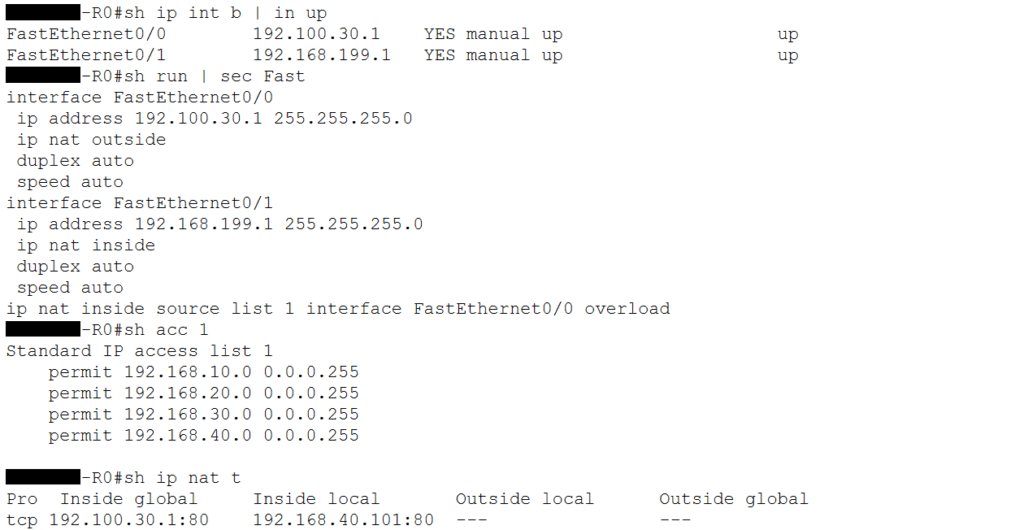Demonstration of my Cisco IOS skills using a small portion of a Data Communications & Net-Centric Computing Assignment
Car Sales Melbourne City has recently relocated from Richmond. The company consists of four main departments: Marketing, Administration, IT, and Sales. Assume that the company has been assigned the IP address 192.100.30.0. As a networking engineer at Car Sales Melbourne City, your task is to complete the following assignments.
Use Packet Tracer v8.2.2 to design a network topology as a reference for your department head. Your topology should include:
- Four servers, each assigned to one of the following departments: Marketing,
Administration, IT, and Sales. - A workstation PC connected to each departmental server to simulate employees’ access.
- A printer located in the IT department.
- Routers (if needed) to ensure interdepartmental communication and efficient data flow.
Topology & Configuration

Design Considerations
Explain the reason for your design choices within 200 words.
I made the design assuming that Sales Melbourne City is a car dealership with offices for the sales, marketing, and admin departments near the showroom, and IT department and its servers deeper inside the building. Due to the nature of the IT department, I placed all servers in the department.
Due to 192.100.30.0 being a Class C IPv4 address, I assumed that the company had a public /24 address block. [1] Public IPv4 addresses are extremely limited. [2] Therefore, these IP addresses should not be wasted on individual workstations, and I decided to utilize Network Address Translation and Port Address Translation, and assign hosts in the company private IPs in the 192.168.0.0/16 range. [3]
Since there are multiple departments, I separated each departmental network using VLAN, which has benefits including increased security and efficiency. [1] Inter-VLAN routing is managed by a layer 3 switch, which is connected to two layer 2 switches, one near the showroom and one for the IT department, using trunked links. Although it is good practice to place servers in separate VLAN(s), they were placed in the same VLAN as the department workstations, because the task requirements specified workstations to be connected to each department server.
Router
show ip interfaces brief | include up:Shows all interfaces that are up onlyshow running-config | section FastEthernet:Shows the running configuration of FastEthernet interfaces onlyshow access-lists:Shows access lists used for Network Address Translation (NAT)show ip nat translations:Shows NAT entries that are currently active

Layer 3 Switch
show vlan brief:Shows all VLANs that have been configured

Layer 2 Switch
show mac address-table: demonstrates LAN connectivity

References
- W. Odom, CCNA 200-301 Official Cert Guide, Volume 1, 2nd Edition, Hoboken: Cisco Press, 2024.
- G. Pan, “Nearing the end of 103/8,” APNIC, 9 October 2023. [Online]. Available: https://blog.apnic.net/2023/10/09/nearing-the-end-of-103-8/. [Accessed 12 April 2025].
- W. Odom, J. Gooley and D. Hucaby, CCNA 200-301 Official Cert Guide, Volume 2, 2nd Edition, Hoboken: Cisco Press, 2024.

Leave a Reply